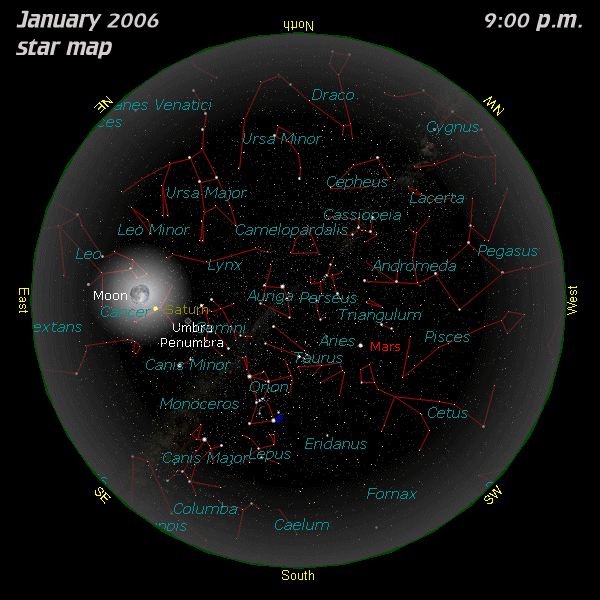



![[Moon Phases]](../moonphases/2006-01-phases.jpg) |
|---|
![[The moon and Venus]](1-06-venus-moon.gif) |
|---|
![[Pleiades Occultation by Moon]](1-06-pleiades-occul.gif) |
|---|
![[Mercury Transits the Sun]](1-06-mercury-transit.gif) |
|---|
![[Bryce at Night]](1-06-bryce-at-night.jpg) |
|---|
| Self-portrait under the light of a nearly full moon at Sunrise Point in Bryce Canyon National Park in SW Utah... A Canon 20D camera was used with a 10-20mm ultra wide-angle lens for this 30-second, F/3.5 exposure at ASA 1600. Gary A. Becker image... |
![[Bryce Canyon Summer Milky Way]](1-06-bryce-summer-mw.jpg) |
|---|
| The summer Milky Way arches across the sky from Paria Point at Bryce Canyon National Park in SW Utah. A Canon 20D camera was used with a 10-20mm ultra wide-angle lens for this guided, 5-minute, F/3.5 exposure at ASA 800. Gary A. Becker image... |
![[Saturn visible in early evening]](1-06-saturn.gif) |
|---|
| Saturn can be easily located in the east at 7 p.m. The ringed world is under the bright stars Castor and Pollux of the Gemini Twins and to the left of Procyon and Sirius. Sky IV map by Gary A. Becker... |
![[Planetary Configurations]](1-06-planetary-configurations.gif) |
|---|
 |
